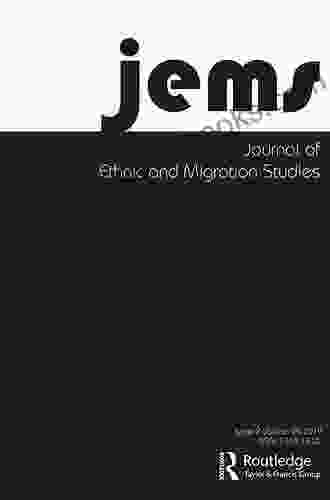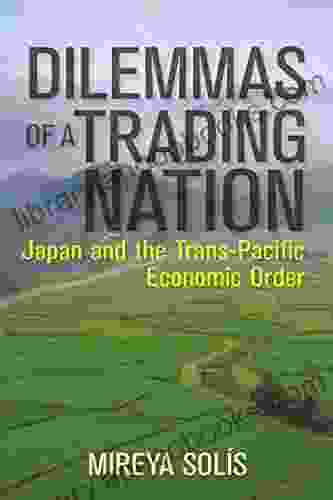The Dilemmas of Trading Nation: Navigating the Complexities of International Trade

4.5 out of 5
| Language | : | English |
| File size | : | 12652 KB |
| Text-to-Speech | : | Enabled |
| Enhanced typesetting | : | Enabled |
| Word Wise | : | Enabled |
| Print length | : | 293 pages |
| Screen Reader | : | Supported |
International trade is a vital engine of economic growth and prosperity. It allows countries to access goods and services that they cannot produce themselves, and it creates jobs and opportunities for workers and businesses around the world. However, international trade also poses a number of challenges, including:
- Trade deficits and imbalances
- Job losses in certain sectors
- Environmental degradation
- Cultural homogenization
These challenges have led to a growing backlash against international trade in recent years. In the United States, for example, President Donald Trump has imposed tariffs on imports from China and other countries, and he has threatened to withdraw from the World Trade Organization (WTO). The European Union and other countries have also taken steps to protect their domestic industries from foreign competition.
The dilemmas of trading nation are complex and there are no easy answers. However, it is important to understand the challenges and opportunities that international trade poses, and to develop policies that maximize the benefits of trade while mitigating its negative effects.
The Benefits of International Trade
International trade has a number of benefits for countries and their citizens, including:
- Increased economic growth: Trade allows countries to access goods and services that they cannot produce themselves, which can lead to increased economic growth. For example, the United States imports oil from Saudi Arabia, which allows the U.S. to have a lower cost of energy than it would if it had to produce all of its own oil.
- Job creation: Trade creates jobs in both exporting and importing countries. In exporting countries, trade creates jobs in the industries that produce goods and services for export. In importing countries, trade creates jobs in the industries that use imported goods and services.
- Lower prices for consumers: Trade can lead to lower prices for consumers by increasing competition and reducing the cost of production. For example, the United States imports clothing from China, which allows U.S. consumers to buy clothing at a lower price than they would if they had to buy all of their clothing from U.S. manufacturers.
- Greater choice for consumers: Trade gives consumers access to a wider variety of goods and services. For example, the United States imports coffee from Colombia, which allows U.S. consumers to choose from a wider variety of coffee than they would if they had to buy all of their coffee from U.S. producers.
The Challenges of International Trade
International trade also poses a number of challenges, including:
- Trade deficits and imbalances: When a country imports more goods and services than it exports, it runs a trade deficit. Trade deficits can lead to a number of economic problems, such as currency devaluation, inflation, and unemployment.
- Job losses in certain sectors: Trade can lead to job losses in certain sectors of the economy, particularly in industries that are heavily reliant on imports. For example, the United States has lost a number of manufacturing jobs to China in recent years.
- Environmental degradation: Trade can lead to environmental degradation, such as pollution and deforestation. For example, the production of goods in China has been linked to air pollution and water pollution in that country.
- Cultural homogenization: Trade can lead to cultural homogenization, as countries adopt the culture of the countries they trade with. For example, the United States has seen a growing influence of Chinese culture in recent years, as more and more Chinese goods are imported into the United States.
The Dilemmas of Trading Nation
The dilemmas of trading nation are complex and there are no easy answers. However, it is important to understand the challenges and opportunities that international trade poses, and to develop policies that maximize the benefits of trade while mitigating its negative effects.
One way to address the challenges of international trade is to promote fair trade. Fair trade is a system of trade that seeks to ensure that the benefits of trade are shared equitably between producers and consumers. Fair trade certified products are produced by farmers and workers who are paid a fair wage and who work in safe and healthy conditions.
Another way to address the challenges of international trade is to invest in education and training. Education and training can help workers to adapt to the changing demands of the global economy and to find new jobs in growing industries.
Finally, it is important to promote dialogue and cooperation between countries on trade issues. Dialogue and cooperation can help to resolve trade disputes and to develop policies that benefit all countries.
International trade is a complex and challenging issue. However, it is important to remember that trade can also be a powerful force for good. Trade can promote economic growth, create jobs, and give consumers access to a wider variety of goods and services. By understanding the challenges and opportunities that international trade poses, and by developing
4.5 out of 5
| Language | : | English |
| File size | : | 12652 KB |
| Text-to-Speech | : | Enabled |
| Enhanced typesetting | : | Enabled |
| Word Wise | : | Enabled |
| Print length | : | 293 pages |
| Screen Reader | : | Supported |
Do you want to contribute by writing guest posts on this blog?
Please contact us and send us a resume of previous articles that you have written.
 Book
Book Novel
Novel Page
Page Chapter
Chapter Text
Text Story
Story Genre
Genre Reader
Reader Library
Library Paperback
Paperback E-book
E-book Magazine
Magazine Newspaper
Newspaper Paragraph
Paragraph Sentence
Sentence Bookmark
Bookmark Shelf
Shelf Glossary
Glossary Bibliography
Bibliography Foreword
Foreword Preface
Preface Synopsis
Synopsis Annotation
Annotation Footnote
Footnote Manuscript
Manuscript Scroll
Scroll Codex
Codex Tome
Tome Bestseller
Bestseller Classics
Classics Library card
Library card Narrative
Narrative Biography
Biography Autobiography
Autobiography Memoir
Memoir Reference
Reference Encyclopedia
Encyclopedia Lynn Eustis
Lynn Eustis Jonathan Spyer
Jonathan Spyer John Law
John Law John C O Neal
John C O Neal John M Eason
John M Eason Tony Stead
Tony Stead Teagan Hunter
Teagan Hunter Julia Gillard
Julia Gillard Maria Lewytzkyj
Maria Lewytzkyj John Deferrari
John Deferrari Wendy Christensen
Wendy Christensen John Mceuen
John Mceuen Jules Romains
Jules Romains Julia Mills
Julia Mills Nadia E Brown
Nadia E Brown John Bunyan
John Bunyan Jp Ahonen
Jp Ahonen Tugume Nicholas
Tugume Nicholas Lynn Shiner
Lynn Shiner Ulf Laessing
Ulf Laessing
Light bulbAdvertise smarter! Our strategic ad space ensures maximum exposure. Reserve your spot today!

 Adrien BlairThe Risen - The Lifetime War, Volume One: An Epic Fantasy that Will Captivate...
Adrien BlairThe Risen - The Lifetime War, Volume One: An Epic Fantasy that Will Captivate...
 Gabriel Garcia MarquezPost-Hegelian Interpretation of European Integration: Critical European...
Gabriel Garcia MarquezPost-Hegelian Interpretation of European Integration: Critical European...
 Calvin FisherChildren of Migration in the European Union and the United States: Research...
Calvin FisherChildren of Migration in the European Union and the United States: Research...
 Ryan FosterThe Unintended Consequences of Political Correctness: The New Reality of Race...
Ryan FosterThe Unintended Consequences of Political Correctness: The New Reality of Race... Gene PowellFollow ·2.9k
Gene PowellFollow ·2.9k Darren NelsonFollow ·7.8k
Darren NelsonFollow ·7.8k William WordsworthFollow ·15.4k
William WordsworthFollow ·15.4k Jon ReedFollow ·12.9k
Jon ReedFollow ·12.9k Gary ReedFollow ·8.8k
Gary ReedFollow ·8.8k Gabriel Garcia MarquezFollow ·5.3k
Gabriel Garcia MarquezFollow ·5.3k Sam CarterFollow ·4.6k
Sam CarterFollow ·4.6k Rod WardFollow ·9.1k
Rod WardFollow ·9.1k

 Tyler Nelson
Tyler NelsonHer Dragon to Slay: Embark on an Epic Journey of...
In a realm where shadows dance and legends...

 Zachary Cox
Zachary Cox101 Best Marine Invertebrates: The Adventurous Aquarist's...
Unveiling the Enchanting Realm...

 William Wordsworth
William WordsworthHer Dragon Fire: Unleash the Power Within Your Soul
Embark on an...

 William Powell
William PowellUnveiling the Enchanting World of Machine Embroidery with...
Embroidery, an ancient art form that has...

 Will Ward
Will WardGolden Fire Clan Dragon Guard: A Journey into a Realm of...
Prepare to be...

 Gustavo Cox
Gustavo CoxProject Ideas to Elevate Your Hobbies and Flourish Your...
<p>Welcome to the ultimate guide to...
4.5 out of 5
| Language | : | English |
| File size | : | 12652 KB |
| Text-to-Speech | : | Enabled |
| Enhanced typesetting | : | Enabled |
| Word Wise | : | Enabled |
| Print length | : | 293 pages |
| Screen Reader | : | Supported |




